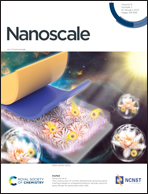Unexpected spontaneous symmetry breaking and diverse ferroicity in two-dimensional mono-metal phosphorus chalcogenides†
Abstract
Mono-metal phosphorus trichalcogenides (MPX3) have attracted intensive interest due to their intriguing magnetic properties and potential applications. Generally, single-layer two-dimensional (2D) MPX3 are believed to be centrosymmetric. However, we discovered that unexpected spontaneous symmetry breaking may occur in some 2D MPX3, i.e., vertical P–P dimers move out of the plane and become tilted, leading to the structural stability being enhanced, the inversion symmetry being simultaneously broken, and ferroelectricity or ferroelasticity emerging. By systematically investigating the family (176) of 2D MPX3, we found that 34 members undergo such symmetry breaking during geometric optimization, in which ten are identified to be dynamically stable. We show that the mismatch between the triangular sublattice of P–P dimers and the hexagonal sublattice of M atoms and the variable accommodation of P lone-pair electrons in different valence states of M atoms play dominant roles in the inversion symmetry breaking and the emergence of ferroicity. We obtained a ferroic atlas of the whole 2D MPX3 family, which also includes many stable antiferromagnetic and non-ferroic members that have never been reported. Our work not only presents ferroelectricity in the 2D MPX3 family but also reveals how diverse ferroicity emerges with various spontaneous symmetry breakings, which will be helpful for further exploration of 2D ferroic materials.



 Please wait while we load your content...
Please wait while we load your content...